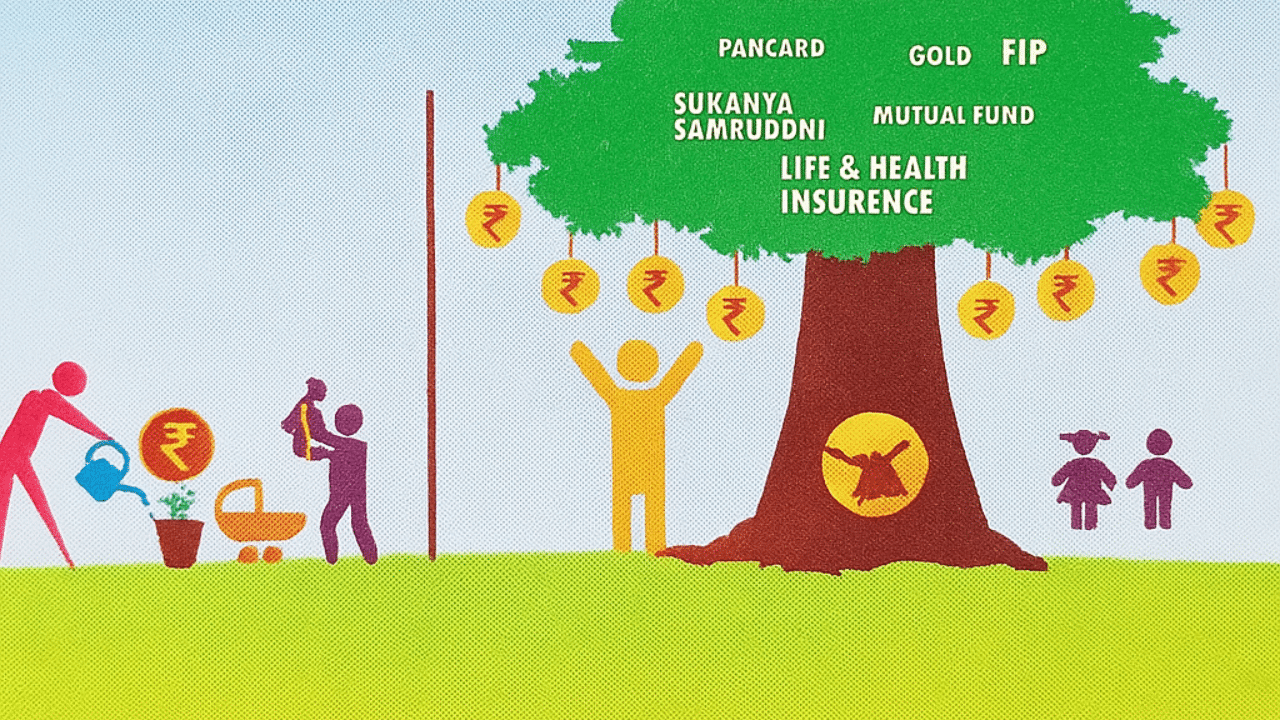Middle-Class Struggles Mahabharata: The Battle of Everyday Survival
The life of an average employee is like a long-running serial—every day brings a new episode of struggle and resilience. The fleeting happiness from one payday barely lasts until the next. By the time the tenth of the month arrives, many are already digging into their reserves, stepping out with a change of clothes and a small bag in hand, quietly whispering, “If only this middle class could survive!” It’s a routine, almost a ritual.
Even if you pass all the tests that middle-class life throws at you, entry into the upper-middle class isn’t guaranteed. And only if you manage not to get wounded along the way, can you dream of knocking on the doors of the truly rich. This, dear reader, is the middle-class life, Babu! If one were to write about it, it would be an epic like the Ramayana. If you sit down to listen, it hits you like the tragedy of Bharat.

We’ve seen dialogues in countless movies—great actors voicing the pain and pride of the middle class, claiming they’re more grounded than the poor. But who really is this middle class? There isn’t just one kind. There are many shades within:
-
Those who plan meticulously how to spend the money they don’t even have yet.
-
Those who spend it all, hoping fortune will favor them tomorrow.
-
Those drowning in debt, unable to control their expenses despite knowing better.
-
Those who recite the mantra of saving and live heavy lives by constantly suppressing their dreams.
The world of the middle class is a swirling mix of all these mindsets.
Go back a few centuries, and you’ll find that the middle class had a far more peaceful life. They lived by the principle: “As long as we have enough, that’s enough.” But that definition has faded over time. Today, even someone earning ₹1.5 lakh a month might still be considered middle class.
Because income alone doesn’t define your class.
To understand true financial standing, we must weigh:
-
Assets,
-
Monthly income,
-
Family size,
-
Future responsibilities,
-
And financial obligations.
Yet many middle-class families try to appear wealthy—putting up a show, like the fox pretending to be the tiger. They stretch themselves thin, often to the point of breaking.
Add to this the modern EMI culture—people are now spending decades paying off loans on homes, cars, and appliances. They take pride in these possessions, treating them as trophies, forgetting they were bought on credit. By the time they finally become debt-free, they’ve spent their prime years in the middle-class loop.
So, when can one be called rich?
-
If income equals expenses – welcome to the middle class.
-
If income is more than twice the expenses – you’re in the upper middle class.
-
But here’s the twist: income isn’t stable. If it doesn’t rise above the inflation rate, you’re slowly sliding downward.

Inflation raises prices. Expenses increase. If income remains unchanged, the only way forward is by cutting costs. But cost-cutting without increasing earnings doesn’t bring growth. You need financial surpluses to build reserves for the future. Easier said than done.
If you’re lucky enough to have a surplus and grow it wisely, here’s the test: Can your savings support your family for five years without work? If yes, congratulations—you’re moderately wealthy. You’ve likely built up assets in the form of cash, property, or investments.
That’s real wealth.
Still, middle-class thinking rarely rests. Even if income rises, the desire to save and invest never stops. This isn’t a bad thing. In fact, middle-class families with financial discipline and foresight often break through to become truly wealthy.
But the climb is steep, and the fall is fast.
One major differentiator between staying middle class and falling into poverty? Medical expenses.
Yes, just one hospital bill can erase years of savings. If you’re thinking, “We can manage without health insurance,” think again. You may not get rich with insurance, but you can definitely avoid slipping into poverty.
And life insurance? It’s not about getting returns. It’s about protecting your family’s dignity. If the breadwinner of the family were to pass unexpectedly, a good life insurance plan ensures that:
-
The children’s education doesn’t stop,
-
Dreams don’t crumble,
-
And the family’s lifestyle doesn’t collapse.
In Conclusion:

The life of the middle class is a relentless journey—of survival, sacrifice, and silent strength. It’s a Mahabharata of its own, fought not on a battlefield, but through bills, budgets, and broken dreams.
But with the right financial habits, awareness, and protection, the middle class can do more than just survive—it can rise.
So, the next time you’re juggling expenses or thinking about skipping that insurance premium, remember: even Krishna needed strategy in the war. So do we.
✨ About Me
Hi! I’m Manikanta Reddy, a passionate finance enthusiast with a strong understanding of money management, personal finance, and smart investment strategies. I believe financial literacy is the foundation of a secure and stress-free life — and I’m here to share practical insights, real-life examples, and simplified advice to help you make better financial decisions.
Whether it’s choosing between paying off a loan or investing, building emergency funds, or planning for retirement — I love breaking down complex topics into easy, actionable tips that anyone can follow.
Let’s learn, grow, and build wealth — the smart way. 💰




